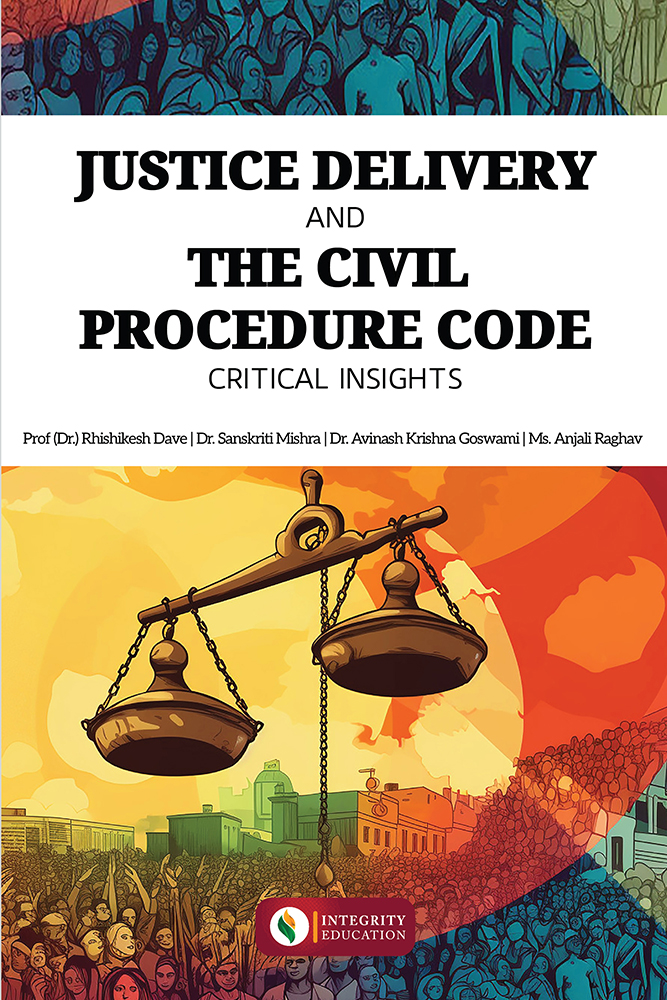About Book
"Bars, Bureaucracy and Beyond" delves into the complexities of Indian prison administration, exploring historical evolution, legal frameworks, and contemporary challenges. Authored by Dr. Avinash Krishna Goswami and Dr. Ritu Gautam, the book offers a scholarly yet accessible analysis of incarceration, prisoners’ rights, and the reforms needed for a more humane penal system.
Prisons are often seen as spaces of punishment, but they also reflect the socio-legal and administrative structures governing a nation. "Bars, Bureaucracy and Beyond" presents a comprehensive examination of India’s prison system, tracing its evolution from ancient times to modern-day reforms. The book explores various theories of punishment, the legal rights of prisoners, and the challenges faced by both inmates and prison administrators.
Preface
"Bars, Bureaucracy and Beyond: Understanding the Dynamics of Indian Prison Administration." As Assistant Professors at Sharda School of Law, our journey into the intricacies of India’s prison system has been both enlightening and challenging.
This book is the culmination of years of research, reflection, and engagement with the prison system. It explores the philosophical foundations of punishment, the historical trajectory of incarceration in India, and the rights and responsibilities of prisoners and prison administrators.
We delve into constitutional provisions, judicial pronouncements, and comparative international practices to understand the state of Indian prisons. Through empirical research, we examine critical issues such as overcrowding, inadequate facilities, and the treatment of inmates. Our goal is to offer a well-rounded discourse that sparks conversations and inspires reforms for a more humane and effective prison system.
Acknowledgement
This book would not have been possible without the support and guidance of many individuals and institutions. We express our deepest gratitude to Sharda School of Law, Sharda University, for providing the necessary academic environment and resources for our research.We extend our heartfelt thanks to our colleagues and mentors, whose insightful discussions and encouragement have been invaluable.This book is dedicated to all those striving for a more just and rehabilitative prison system.
Inside Book
| Sl. No. | Chapters | Page No |
| Foreword | III | |
| Preface | V | |
| Chapter-1 | Introduction | 1-25 |
| 1.1.1. Jail: Concept and Definition | ||
| 1.1.2.Theories of Punishment | ||
| 1.1.3. Types of Jails in India | ||
| 1.1.4 Role of Police in Jail Administration | ||
| 1.1.5 Constitutional Guaranteed Fundamental Rights | ||
| 1.1.6 Contemporary Issues and Challenges | ||
| Chapter-2 | Evolution and Development of Prison System Globally | 26-70 |
| 2.0 Introduction | ||
| 2.1. Historical Evolution | ||
| 2.2. Conceptual Development in India | ||
| 2.3. History of Prisons in India | ||
| 2.4. Reforms in the Indian Prison System | ||
| 2.5. Global Development in the Prison System | ||
| 2.5.4 Russia | ||
| 2.5.4.1 The Prison System's Size | ||
| 2.5.4.2 Prison Conditions | ||
| 2.5.5 Other Countries | ||
| Chapter-3 | Legal Standing of Prisoners Under Various Statutory Provisions | 71-111 |
| 3.0 Introduction | ||
| 3.1 Constitutional Provisions | ||
| 3.2. India's Legal Framework for Prisons | ||
| 3.3. Miscellaneous regulations / reports concerning Prisoners | ||
| 3.4. Supreme Court rulings with respect to the prisoners’ rights | ||
| 3.5. Prison Administration Authorities in India | ||
| 3.6. International Standards for Prisoners’ Rights | ||
| Chapter-4 | Jail Administration & Current Issues and Challenges | 112-147 |
| 4.0 Introduction | ||
| 4.1. Criminal Justice System | ||
| 4.2. Issues Identified by Law Commission | ||
| 4.3. Analysis of NCRB Data: Issues and Challenges | ||
| 4.3.2. Improper allocation of Budget and unutilized amount | ||
| 4.4. Contemporary Legal Issues and Challenges | ||
| Chapter-5 | Data Analysis and Findings | 148-165 |
| 5.0 Introduction | ||
| 5.1. Empirical Research | ||
| 5.2. Area of Study | ||
| 5.3. Collection of Data | ||
| 5.4. Research Hypothesis | ||
| 5.5. Research Gap | ||
| 5.6. Testing of Hypothesis | ||
| 5.7. Data Analysis: | ||
| 5.8. Findings | ||
| Chapter-6 | Conclusion & Suggestion | 166-190 |
| 6.0 Conclusion | ||
| 6.1 Suggestions |












